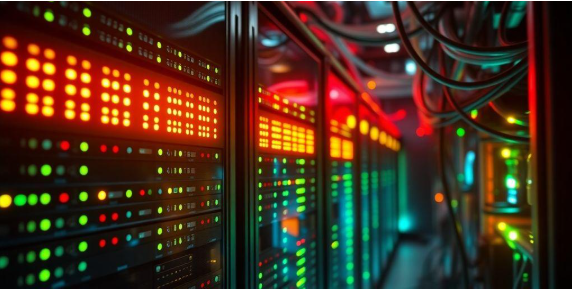Introduction
It’s 2025, and Self-healing IT systems are transforming the way businesses manage infrastructure by automatically detecting, diagnosing, and resolving issues without human intervention. Much like the human immune system, these systems continuously monitor IT environments, identify potential failures, and take corrective action to ensure minimal downtime and maximum efficiency.
At the core of self-healing IT is artificial intelligence (AI), which enables systems to analyze vast amounts of data, detect patterns, and predict issues before they escalate. Unlike traditional reactive approaches that address problems after they occur, AI-driven self-healing systems anticipate and prevent failures in real time. Advanced technologies like Causal AI go even further by pinpointing the root causes of issues based on historical data, enabling more effective and proactive remediation.
As businesses continue to adopt automation and AI-driven solutions, understanding the mechanics and benefits of self-healing IT is crucial.
Let’s dive deeper into how self-healing works and its impact on modern IT infrastructure.
Understanding Self-Healing in IT
Before discussing Self-healing in IT, let’s understand what it was before. Historically, IT maintenance was reactive; teams manually monitored systems, troubleshooted issues, and implemented fixes. This approach required significant human intervention, was time-consuming, and often led to costly downtime.
So what’s the change today? Well, AI has shifted IT operations toward automation. Self-healing IT infrastructure leverages AI to predict and prevent failures, reducing the need for constant human oversight. These systems use autonomous remediation to detect, diagnose, and resolve issues in real-time, often before users notice a problem.
Today, self-healing IT systems continuously learn and adapt. Using AI and machine learning, they optimize performance, increase reliability, and improve system uptime while reducing operational costs.
Wondering what’s driving this technology in modern IT systems? Let’s discuss that next.
Key Components of AI-Driven Self-Healing Systems
1. Continuous Monitoring
Self-healing systems continuously monitor servers, applications, and networks, collecting real-time data to detect potential issues. Monitoring includes:
- System performance tracking
- Network traffic analysis
- Application health checks
2. Anomaly Detection
AI-powered anomaly detection identifies deviations from normal behavior by analyzing historical data. Examples include:
- Sudden spikes in CPU usage
- Unusual network traffic patterns
- Irregular memory consumption
3. Automated Diagnosis
Once an anomaly is detected, AI performs automated root cause analysis by:
- Correlating various data points
- Identifying the source of the issue
- Determining the best course of action
4. Autonomous Remediation
Self-healing systems automatically take corrective actions, such as:
- Restarting failing services
- Allocating additional resources
- Rolling back faulty updates
This minimizes downtime and keeps IT systems operational without human intervention.
5. Adaptive Learning
AI-driven self-healing systems improve over time by learning from past incidents. This results in:
- Enhanced problem detection accuracy
- Faster resolution times
- Greater overall system resilience
With the technology behind self-healing IT understood, let’s next discuss how the benefits are reaped!
Benefits of AI-Enabled Self-Healing IT Systems
1. Increased System Uptime
By proactively identifying and resolving issues, AI-powered self-healing systems reduce downtime, ensuring:
- Higher availability of critical applications
- Improved user experience
- Enhanced business continuity
2. Cost Efficiency
Automating IT maintenance lowers operational costs by reducing manual intervention. Benefits include:
- Reduced labor costs
- Lower expenses from system failures
- More efficient use of IT resources
3. Enhanced Security
Self-healing systems improve cybersecurity by automatically detecting and responding to threats through:
- Automated vulnerability patching
- Threat detection and mitigation
- Real-time attack response
4. Scalability
AI-powered self-healing IT systems scale effortlessly to meet growing business demands. Benefits include:
- Automated resource provisioning
- Dynamic performance optimization
- Improved IT infrastructure management
However, with every other IT solution, this one has those problems too. Let’s explore the key challenges and solutions that organizations face when implementing these systems.
Challenges and Considerations
1. Data Quality and Integration
AI-driven self-healing systems rely on high-quality data. Poor data quality can lead to inaccurate diagnostics and ineffective remediation. Organizations must ensure:
- Data consistency and accuracy
- Seamless integration of multiple data sources
- Robust data management strategies
2. Security and Privacy Concerns
Self-healing systems require deep access to IT infrastructure, raising security concerns. Best practices include:
- Strong authentication and encryption
- Adherence to regulatory requirements (e.g., GDPR, HIPAA)
- Protection of sensitive information from unauthorized access
3. Regulatory Compliance
Different industries have strict compliance requirements that impact self-healing IT implementations. Organizations must:
- Ensure adherence to industry regulations
- Implement security controls to meet compliance standards
- Maintain transparency in AI-driven decision-making
4. System Complexity
While self-healing systems reduce manual workload, they introduce complexity in implementation and management. Organizations should:
- Train IT teams on AI-driven automation
- Document self-healing processes clearly
- Monitor system behavior to prevent unintended consequences
Wondering how it’s being used in the real world? Well, scroll on.
Case Studies and Real-World Applications
1. Enterprise IT Operations
Large enterprises benefit from self-healing IT systems by reducing downtime and improving efficiency. Examples include:
- Automatically detecting and resolving server failures
- Optimizing database performance
- Enhancing IT service management with AI-driven automation
2. Cloud Service Providers
Cloud platforms like AWS, Azure, and Google Cloud use self-healing technologies to maintain service reliability through:
- Automatic resource scaling
- Failover mechanisms for high availability
- Predictive maintenance to prevent failures
3. Cybersecurity
Self-healing systems play a critical role in cybersecurity by autonomously responding to threats. Use cases include:
- Automated intrusion detection and mitigation
- Proactive vulnerability patching
- Continuous security monitoring and improvement
Conclusion
AI-powered self-healing IT systems are transforming IT infrastructure management by automating problem detection, diagnosis, and resolution. These systems improve uptime, reduce costs, and enhance security. While challenges exist, the benefits far outweigh the complexities, making self-healing IT a valuable investment. As AI continues to evolve, adopting self-healing IT systems will become essential for resilient and efficient IT operations.

